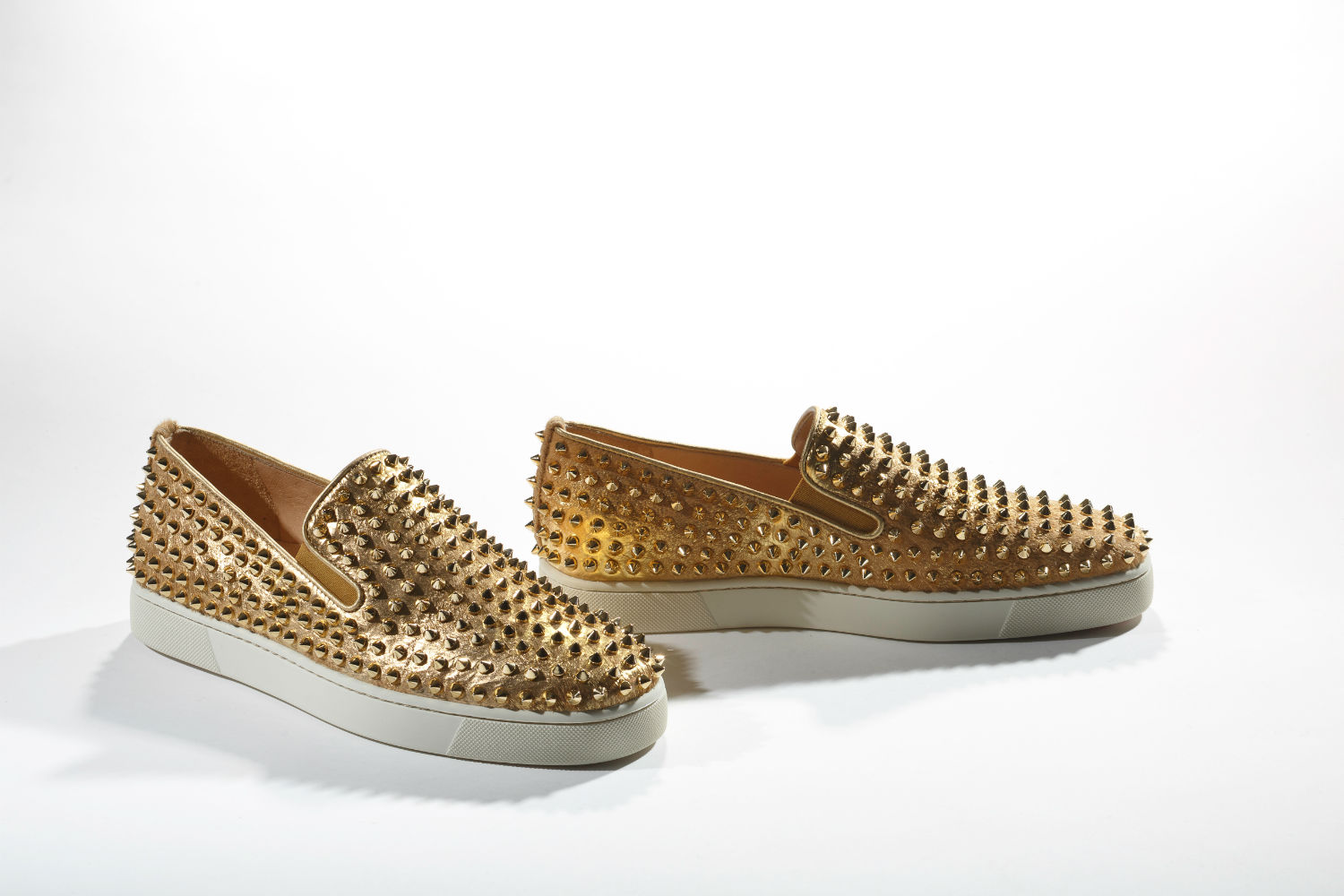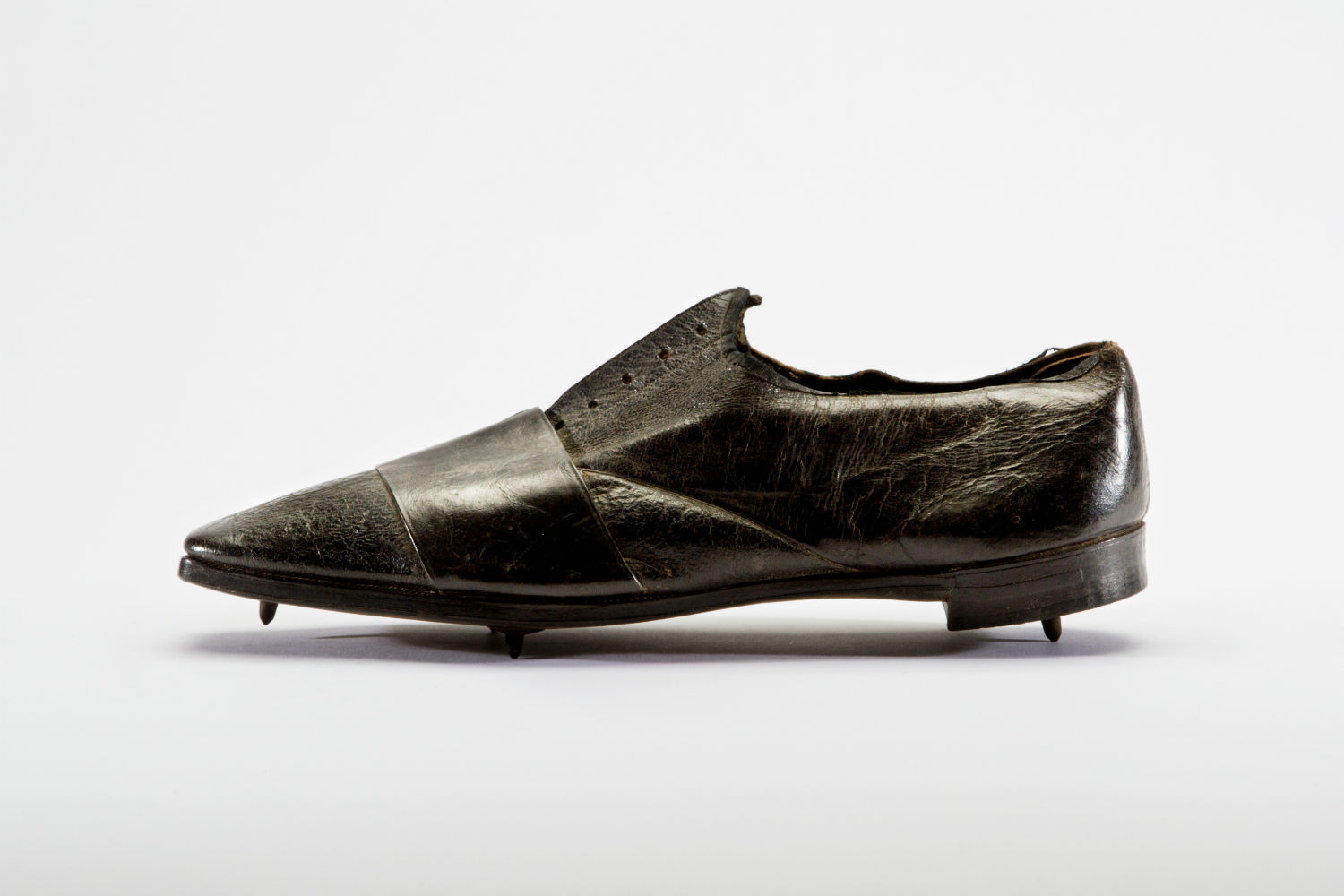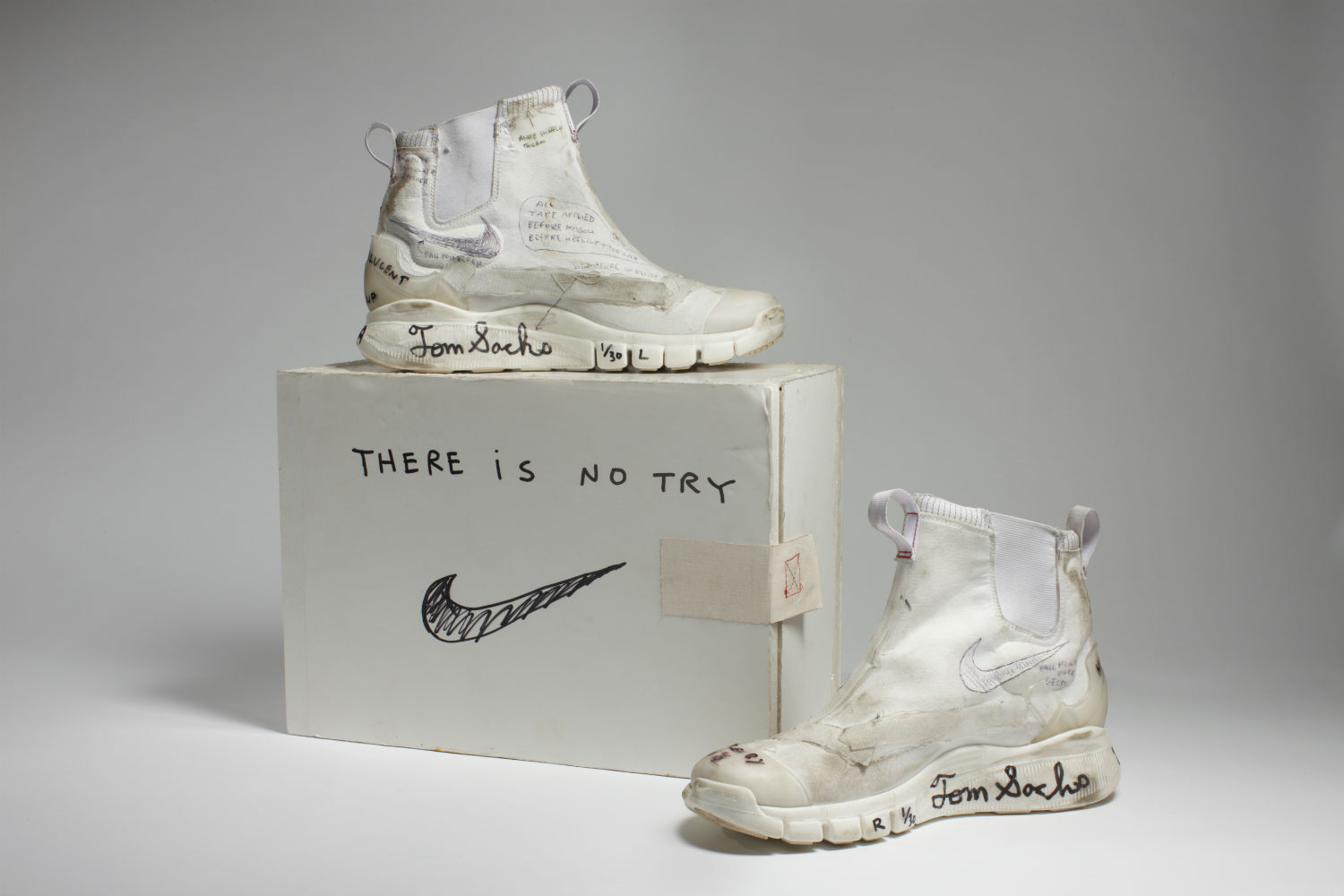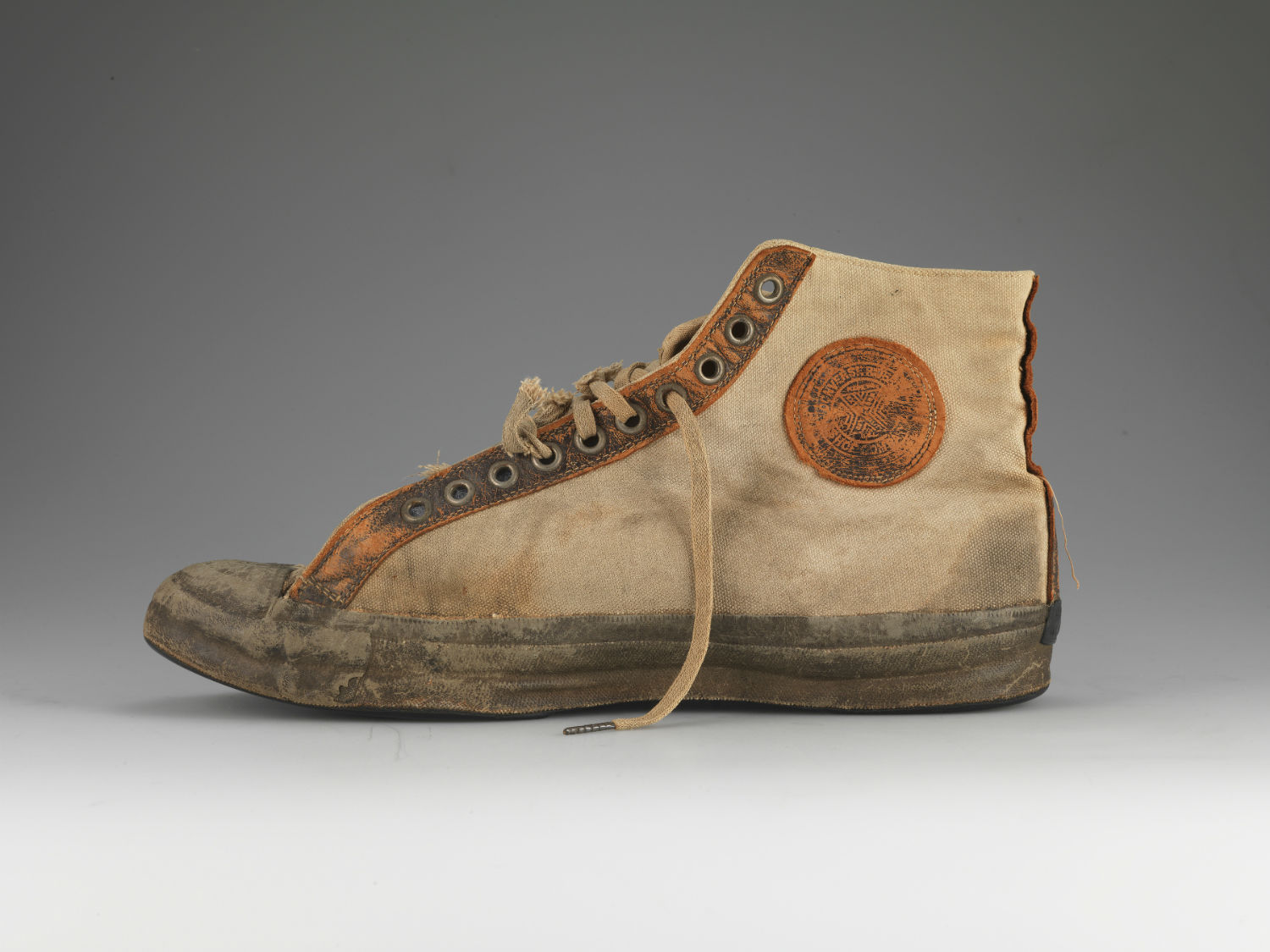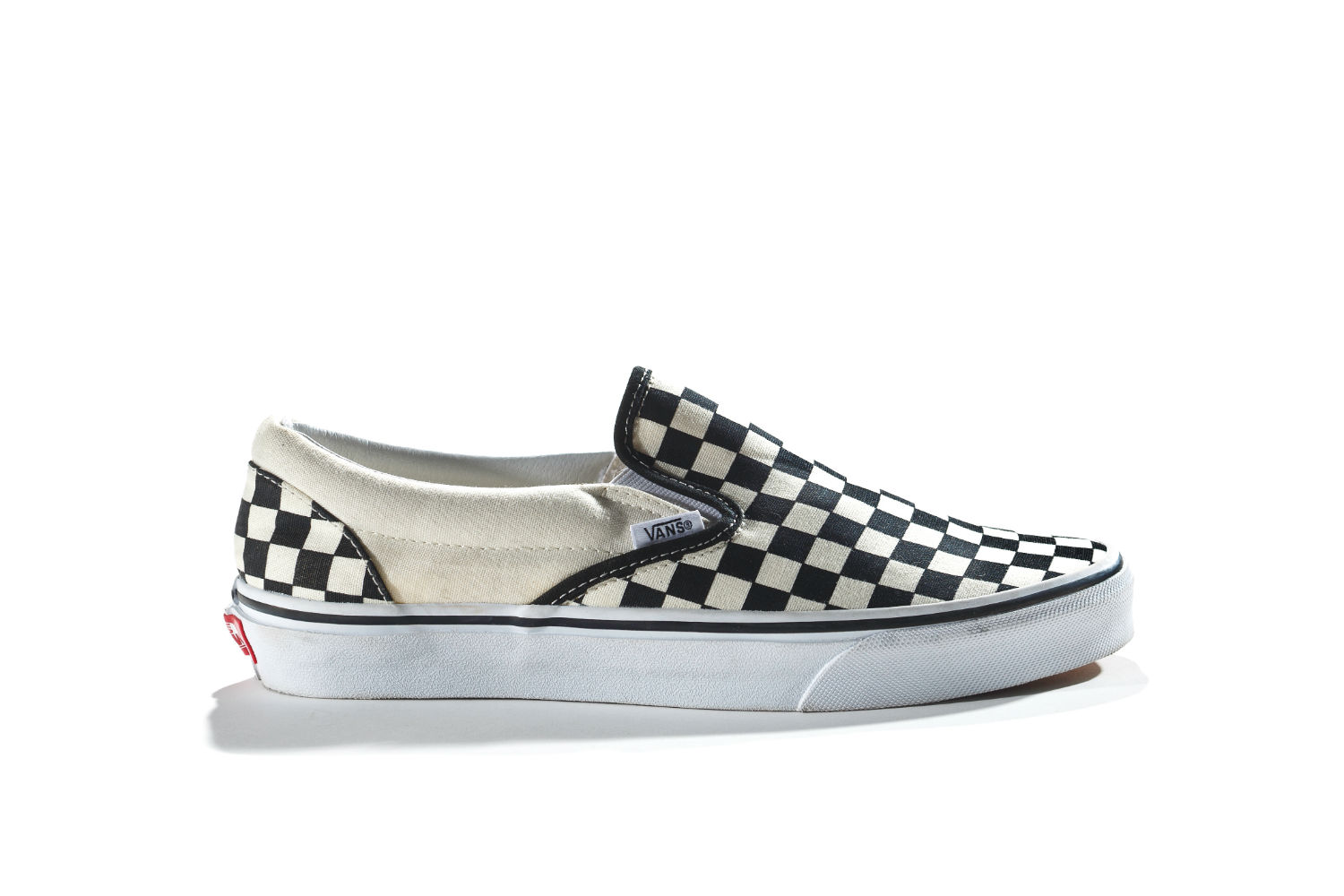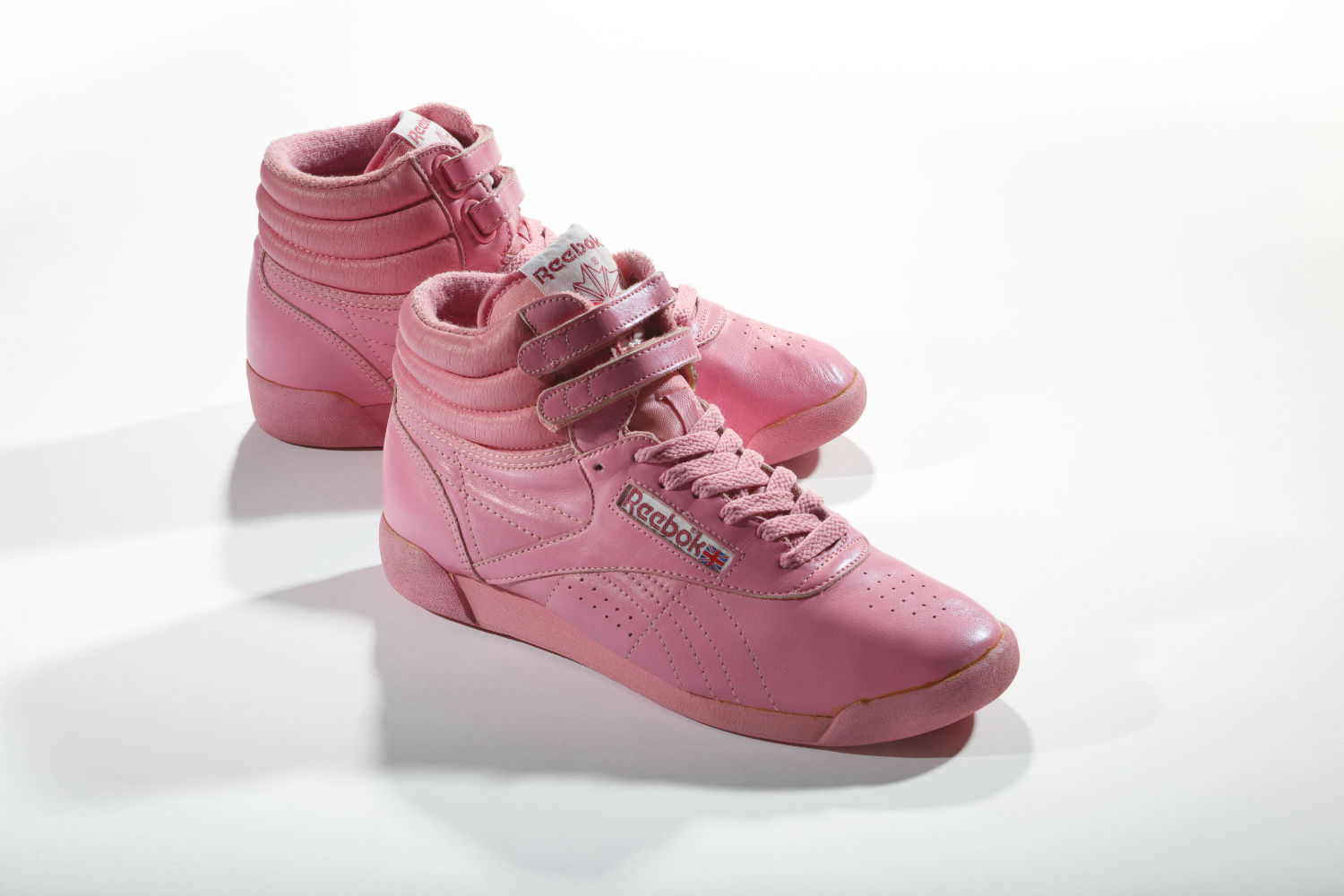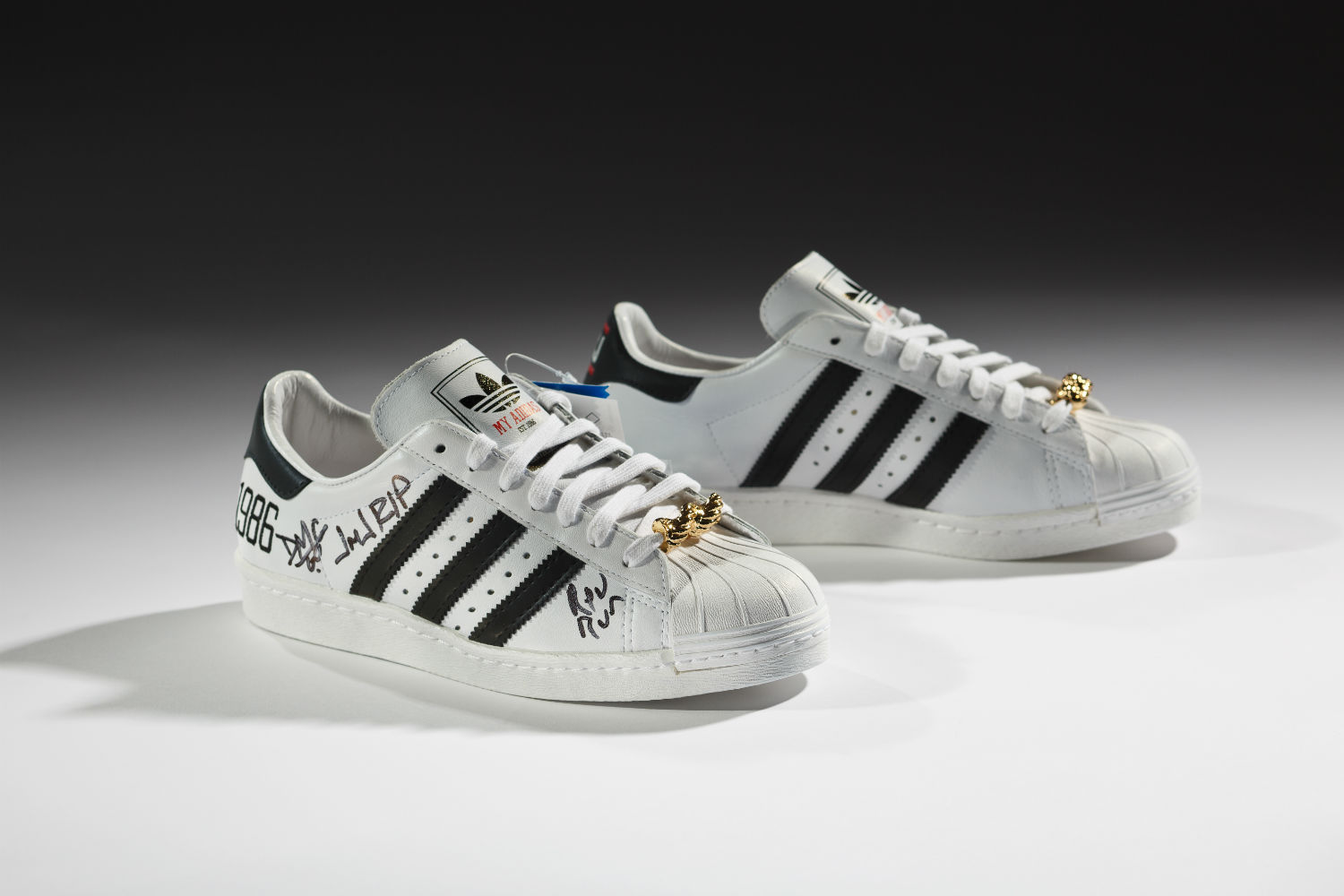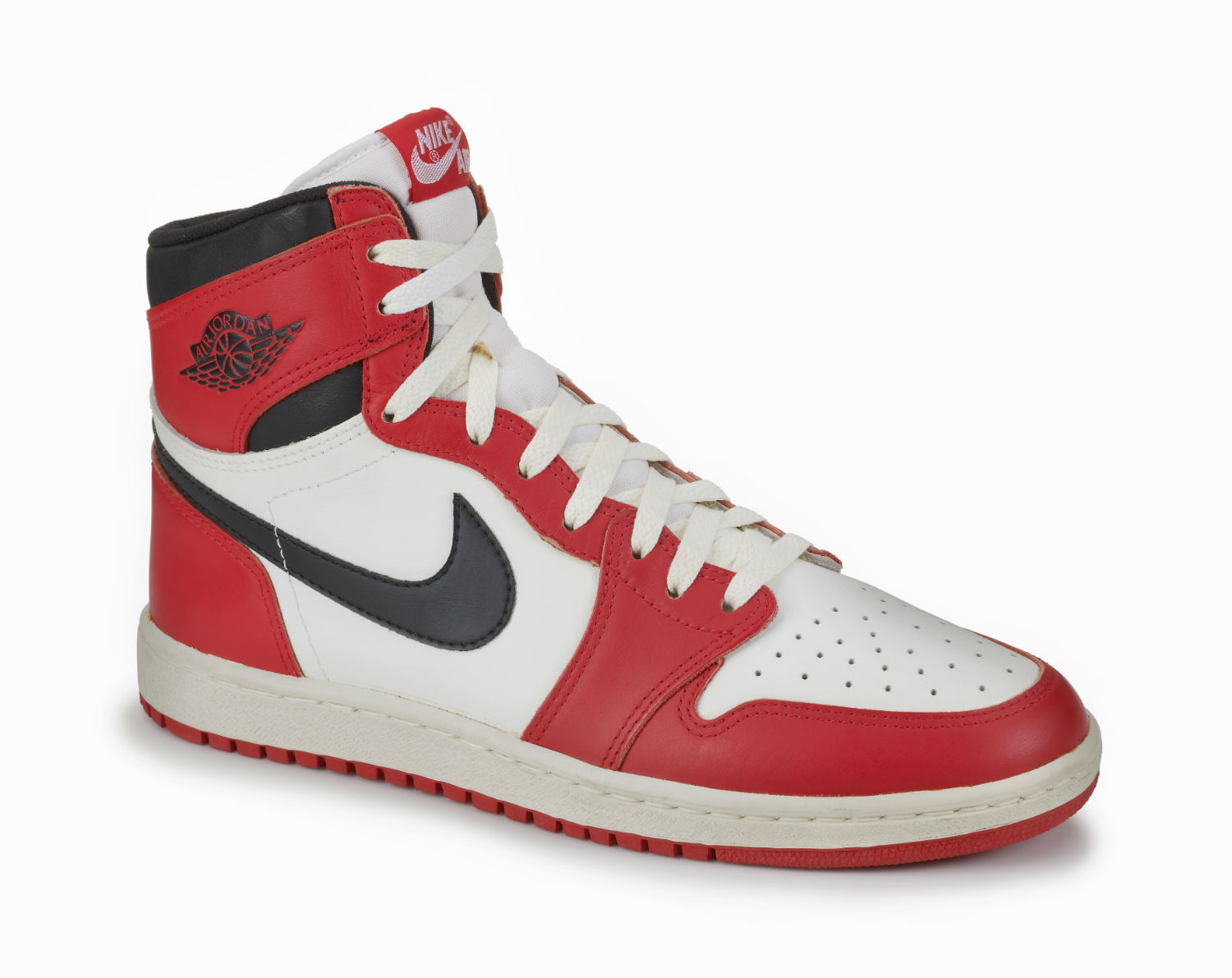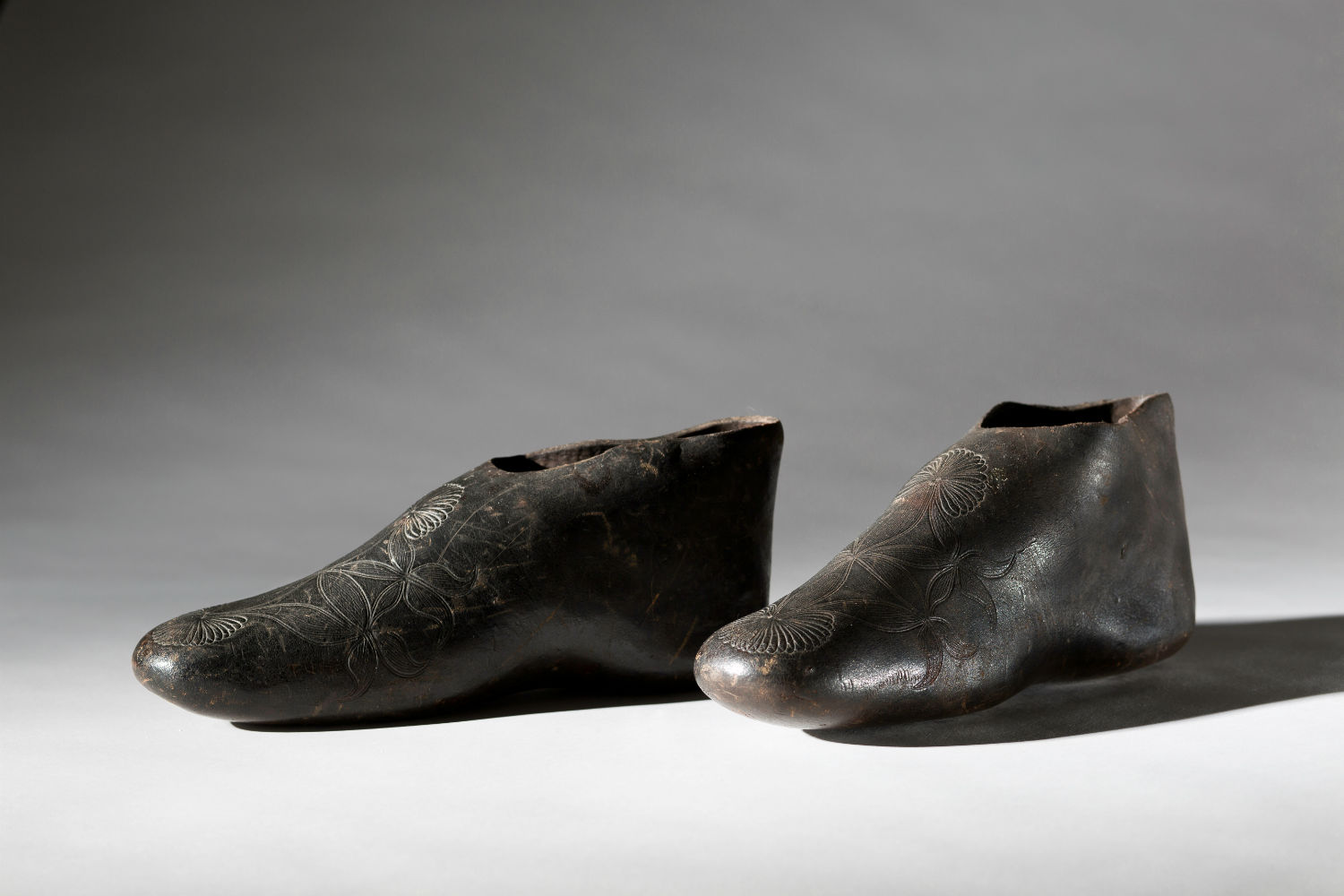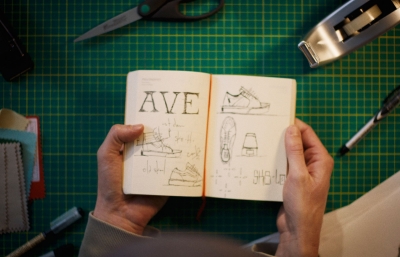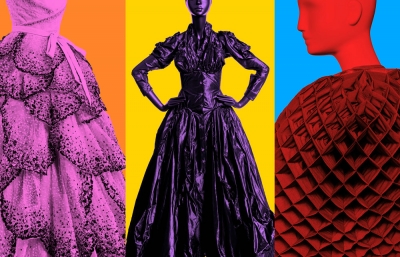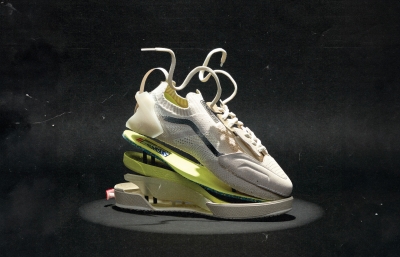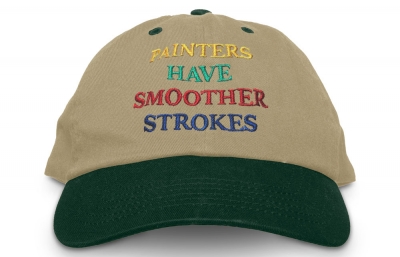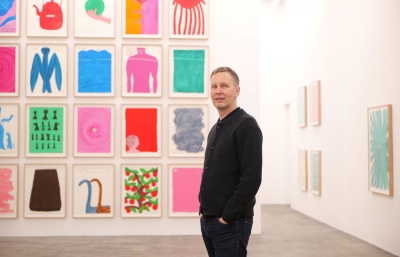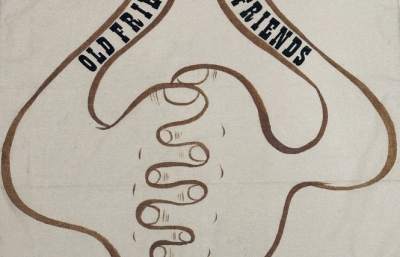Sometimes it’s as plain as the shoes on your feet. As Evelyn Orantes, Curator of Public Practice at the Oakland Museum recalls, “It was a great collaboration as we were going through the process of deciding what our upcoming exhibitions would be. I hosted a brainstorming session and we came up with a bunch of ideas, and someone brought up the museum’s huge shoe collection.
It was fun batting around different ideas and realizing it was such a topic of conversation, an aspect of popular culture that people would appreciate.” Look for artists like Shantell Martin, who debrands white sneakers, then covers them with her own wonderful drawings, and former architect Tinker Hatfield’s creations, like the Air Max 90 and Air Jordan lll. The show got its legs in Toronto under the curatorship of the Bata Shoe Museum’s Elizabeth Semmelhack, who has published books such as Standing Tall: The Curious History of Men in Heels, and Fashion Victims: The Pleasures and Perils of Dress in the 19th Century. Both curators brought me up to speed.
Gwynned Vitello: In categorizing the different styles, how did you organize the show?
Elizabeth Semmelhack: The exhibition was grouped historically, starting with the earliest sneakers and moving through the twentieth century to contemporary times. There is a stand-alone section on innovation and design. I felt it was important to situate sneakers within an historic framework as the reasons for many of the shifts in sneaker culture were impacted by large social issues.

Manufacturer Unknown Pre-vulcanized Rubber Overshoes, ca. 1830s. Collection of the Bata Shoe Museum Photo: Ron Wood. Courtesy American Federation of Arts/Bata Shoe Museum
It would be interesting to know the origins of the first sneakers and how they later developed.
Evelyn Orantes: The Brazilians were the first people making the original rubber shoes before sneakers. The initial material was unstable, melty or brittle. The first rubber shoes in the West were Brazilian rubber overshoes made for the American market. The naturalist Isaiah Warren watched them being made in the late 1840s while in Brazil, where he wrote that the “girls were engaged in the making of various impressions, such as flowers... upon the soft surface of the rubber by means of their thumbnails, which are pared and cultivated for this purpose.” Although the pair in the exhibition is now hard to the touch, it is in remarkable condition and its original decorations remain clearly visible.
ES: The first sneakers were status items. Not only did one have to be able to afford to own more than one pair of shoes, one also had to be able to have time to play. People forget that before workers’ rights, the forty-hour work week and weekends were not part of most laborers’ lives. Simply having the time to play was a sign of wealth, and wearing early sneakers helped convey that status.
Given the influence of skateboarding and Silicon Valley, how is the West Coast represented in the show?
EO: The sneaker conversation is international in its scope, but there are some West Coast contributions that we drew out for presentation at OMCA, specifically skater culture as represented by the iconic Vans black-and-white checkerboard slip-on. Skateboarding may have originated on the West Coast, but passion for the lifestyle quickly spread across the country, and interest in skating among some East Coast rappers further paved the way for skate sneakers to make forays into urban fashion. When the computer age arrived, with it came the sartorial style of Silicon Valley and the influence of tech culture in sneakers, like the adidas Micropacer.
What were the features of the Micropacer?
EO: By the early 1980s, computer technology was embraced in athletic footwear as a means of enhancing athletic performance. The revolutionary adidas Micropacer, released in ’84, had a microsensor in the left toe that could record distance, running pace and caloric consumption. The information was retrieved on the tongue of the left shoe on a readout screen, only one of the futuristic aspects; the silver gilt leather and unusual lace covers also heralded a new era that offered the hope of physical perfection through technology.
Did you devote a portion of the show to the lacing aspect of sneaker culture?
EO: The small details like stitching are so fascinating. I never thought of shoelaces as accessories before, but they’re an inexpensive way of personalizing your sneakers to reflect your personality, and there are hundreds of ways to customize your kicks with this sneaker accessory. We will have an area in the exhibition where visitors will be invited to try a couple of new ways of lacing their own sneakers.

Reebok Freestyle, 1982. Collection of the Northampton Museums and Art Gallery. Photo: Ron Wood. Courtesy American Federation of Arts
So many of the shoes have a story to tell. I’m thinking of one with an unusual take on the endorsement model and another illustrating and taking a stand on immigration.
ES: Each has a story, but one of my favorites is the Robert Haillet/Stan Smith sneaker. The iconic Stan Smith actually started out as a shoe for the famous French tennis player Haillet. When adidas decided to gain traction in the US market, they asked Stan Smith to also endorse the shoe. For a short time, sneakers featuring Stan Smith’s image on the tongue and both players’ name on the sides were produced, making for a bit of a confusing model. Eventually, Haillet’s name was removed and the Stan Smith was born.
EO: Conceptual artist Judi Werthein chose the Spanish word brinco, meaning “jump,” as it is the term migrants use to describe the crossing from Mexico to San Diego. Werthein designed the sneakers to assist with the crossing, each pair equipped with a compass, light and painkillers in case of injury. The shoes protect the ankles from snake and tarantula bites and have removable soles printed with maps of popular routes from Tijuana to San Diego.
As a matter of personal and especially archival conservation, what is the best way to preserve a pair of sneakers?
ES: Believe it or not, sneakers from the 1980s are extremely delicate and great care is needed to preserve them. One of the biggest challenges is that the midsoles on many of these sneakers are disintegrating. While nothing can be done to fix this problem, our conservator, Ada Hopkins, recommends freezing as a means of temporarily stopping the progression of this disintegration. For other sneakers, keeping them away from light and stored in acid-free boxes is best.
----
Originally published in the February 2017 issue of Juxtapoz Magazine, on newsstands worldwide and in our web store.

